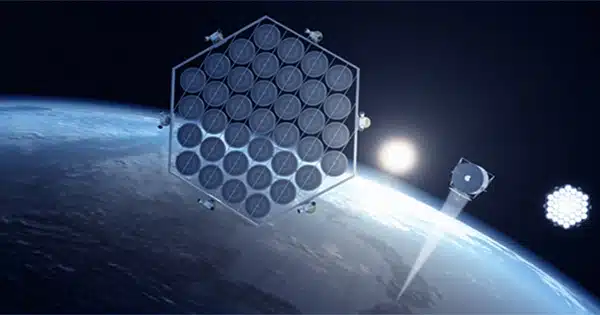TOKYO — A new worldwide competition to create technology for transmitting solar power captured in space to Earth is heating up, with a Japanese public-private collaboration hoping to conduct a trial around fiscal 2025.
In 1968, an American physicist proposed space-based solar power. The plan is to shoot solar panels into space at a height of 36,000 kilometers to create electricity.
Solar energy is converted into microwaves (the same electromagnetic radiation used in microwave ovens) and transmitted to ground-based receiving stations for conversion into electrical energy.
Microwaves can penetrate clouds, ensuring a consistent supply of beamed-down electricity regardless of the time of day or weather.

The study has been conducted in Japan by a team under the direction of the former president of Kyoto University, Hiroshi Matsumoto. It was the first country in the world to effectively transmit power using microwaves in space in the 1980s.
Professor Naoki Shinohara of Kyoto University continued the research after him, and in 2009 the team managed to use an airship to send power from a height of 30 meters to a cell phone that was located on the ground. It is advancing the fundamental technology for wireless power transfer.
Shinohara led the technical committee for an industry-government-academic project led by the Ministry of Economy, Trade, and Industry in 2009.
It successfully conducted horizontal microwave power transmission experiments in 2015 and vertical microwave power transmission experiments in 2018, both over a distance of 50 meters. Vertical transmission over distances of 1 to 5 kilometers will be attempted in the future.
Shinohara is looking much farther forward. “If we can demonstrate our technology ahead of the rest of the world, it will also be a bargaining tool for space development with other countries,” he explained.
Around fiscal 2025, the team intends to conduct an experiment to see whether power may be delivered from space to Earth. It will be sent to ground-based receiving stations from hundreds of kilometers away using small satellites.
The commercialization process is also being advanced by rivals. Both the California Institute of Technology and the U.S. Air Force Research Laboratory are working on substantial projects. The technology is being developed in China by organizations like Chongqing University, while the European Space Agency is formulating its own plans.
Historically, energy crises have stimulated interest in space-based solar. During the oil shock decade of the 1970s, NASA and the US Department of Energy examined it, but the notion died as the crisis atmosphere receded. Around the year 2000, NASA redoubled its efforts as the Kyoto Protocol climate change treaty raised global awareness of environmental challenges. The Japan Aerospace Exploration Agency also got involved.
As more governments and corporations strive towards net-zero carbon dioxide emissions, interest in space-based solar has grown.
But the biggest barrier is still cost. Space-based solar would require panels with an area equal to a square that is 2 kilometers on each side in order to generate around 1 gigawatt, or the same amount of power as one nuclear reactor. Installing this much capacity will probably cost more than 1 trillion yen ($7.1 billion), even with technical advancements.
















